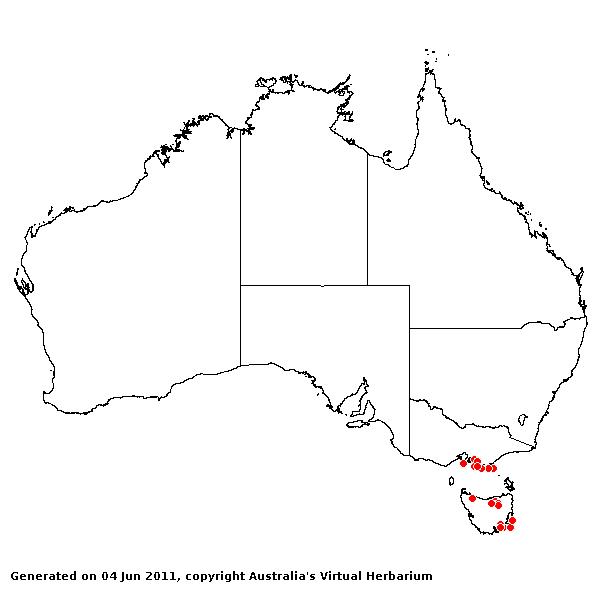Spartina anglica* C.E.Hubb. J. Linn. Soc., Bot. 76: 364 (1978).
Classification. (GPWG 2001) : Subfamily Chloridoideae. Cynodonteae.
Type of Basionym or
Protologue Information: England: W. Sussex: Bosham, fringing shore on
mud-flats and muddy shingle, extending into water of Chichester Harbour,
forming extensive masses, 17 Aug 1868, C.E. Hubbard D17868A (HT: K; IT:
L, US-2907471).
Key references
(books and floras): [2002] D.Sharp & B.K.Simon, AusGrass, Grasses of
Australia.
Illustrations:
[2005] K.Mallet (ed.), Flora of Australia 44B: Poaceae 3 (Fig.
55A-C).
Habit.
Perennial. Rhizomes present, elongated. Stolons absent or present. Culms erect,
30–130 cm tall. Ligule a fringe of hairs, 2–3 mm long. Leaf-blades flat or
convolute, 10–45 cm long, 6–15 mm wide.
Inflorescence.
Inflorescence compound, a panicle, a panicle of spikes. Central inflorescence
axis 0–15 cm long.
Spikelets.
Spikelets sessile. Fertile spikelets 1-flowered, comprising 1(–2) fertile
floret(s), without rachilla extension, oblong, laterally compressed, 13–21 mm
long.
Glumes. Glumes
dissimilar. Lower glume linear, membranous, keeled, 1-keeled, 1 -nerved. Lower
glume surface indumented. Upper glume lanceolate, 14–21 mm long, herbaceous,
keeled, 1-keeled, 3–6 -nerved. Upper glume surface indumented.
Florets.
Fertile lemma 14–21 mm long, keeled, 1–3 -nerved. Lemma surface indumented. Palea
2 -nerved. Lodicules absent or vestigial. Anthers 3.
Continental
Distribution: Europe, Temperate Asia, and Australasia.
Australian
Distribution: Victoria, Tasmania.
Victoria:
Gippsland Plain, Otway Plain, Wilsons Promontory. Tasmania: North West,
North East, Midlands.
Notes.
S. anglica (under the name S. townsendii) was first introduced
into Australia in the 1930's to reclaim low lying saline areas and was later
seen as useful in stabilising mudflats and protecting estuarine streambanks,
seawalls and other structures from wave action and erosion. It spreads rapidly
in favourable environments, being rhizomatous and a profuse seeder, with seeds
widely dispersed by water, and is now considered a weed.
S. anglica is an amphidiploid (or
allotetraploid) derived from the doubling of chromosomes in the hybrid diploid S.
x townsendii. Backcrosses and polyhaploids have also emerged.
Estuaries,
inlets and lagoons in southern Gippsland, Vic., northern and southern Tas.;
native to southern England and northern France, introduced elsewhere. Tidal
mud-flats and swampy river flood plains, forming marshland; it has occupied
previously unvegetated mudflats in some areas, and replaced the native white
mangrove (Avicennia marina var. resinifera) as the pioneer
species on the intertidal flats. It promotes sediment accretion.




